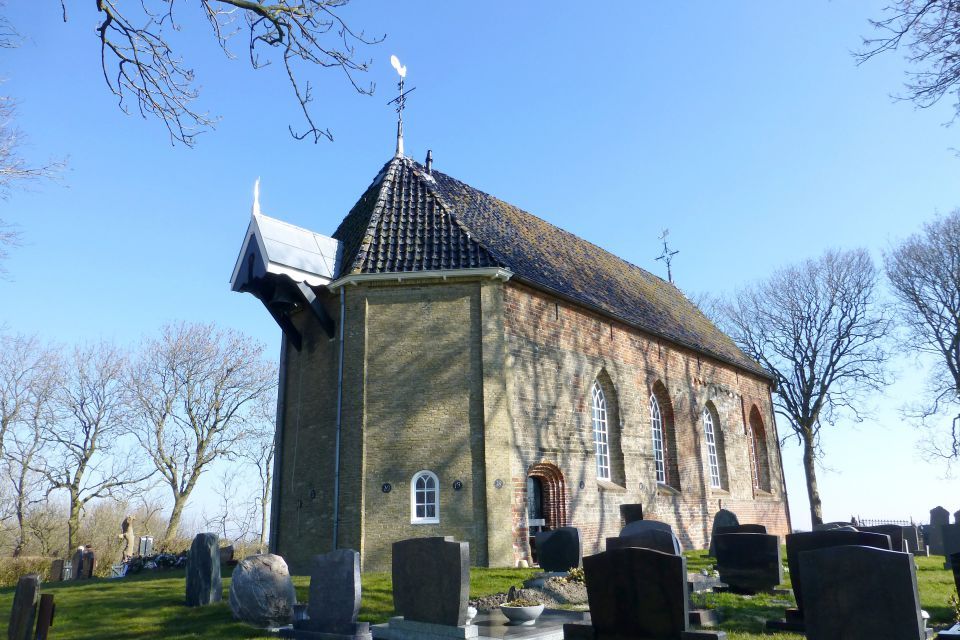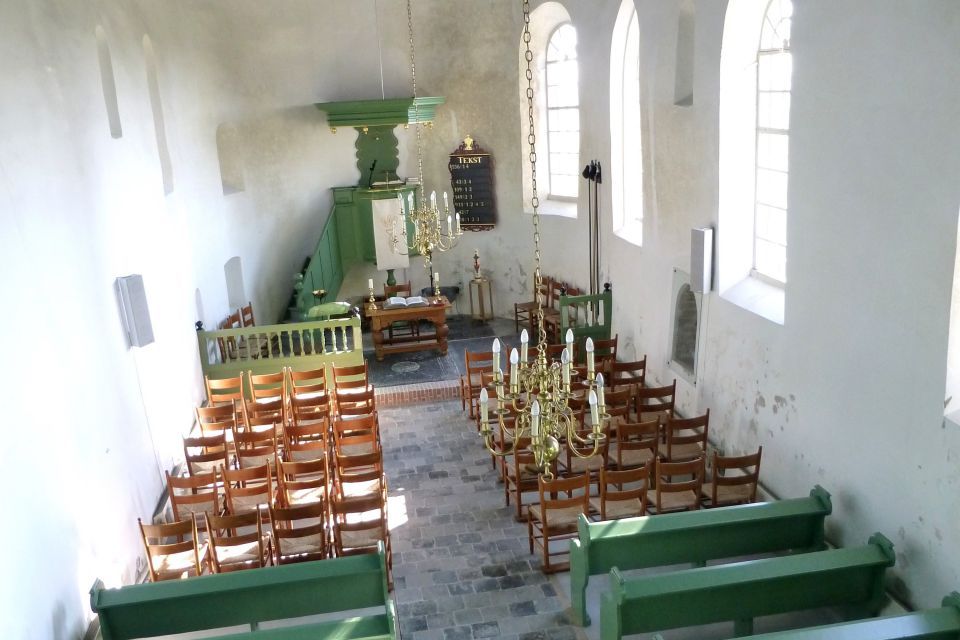St Vitus church Wetsens
WETSENS
Wetsens was once Fryslân's largest mound, but only a small part of it has remained since 1892. The ascent to the church has become quite steep due to excavations
Take a look
Still beyond Dokkum, almost on the Wadden coast is the mound village of Wetsens with the Sint Vitus church in the middle. Due to its remoteness from the connecting road from Dokkum to Metslawier, this village has remained beautifully intact.
This mound was once the largest in Fryslân, but only a small part of it has remained since 1892. A farmhouse was built on the excavated land. The ascent to the church became quite steep due to the excavations. Despite all the changes over the centuries, the village of Wetsens forms an idyllic picture.
The small church was built of tufa stone in the 12th century. In 1842, the gabled roof tower collapsed and was replaced by a three-sided roof with a separate (attached to the church) bell tower.
This church has been owned by the Alde Fryske Tsjerken Foundation since 2016 and is managed by a local committee of volunteers. The committee organises fun activities such as walks and concerts; check the church's website for a list of activities. The church is also rented out for mourning and weddings.
Here you will find St Vitus church Wetsens
Opgong 19122 CV WETSENS Plan your route naar St Vitus church Wetsens
from your location




